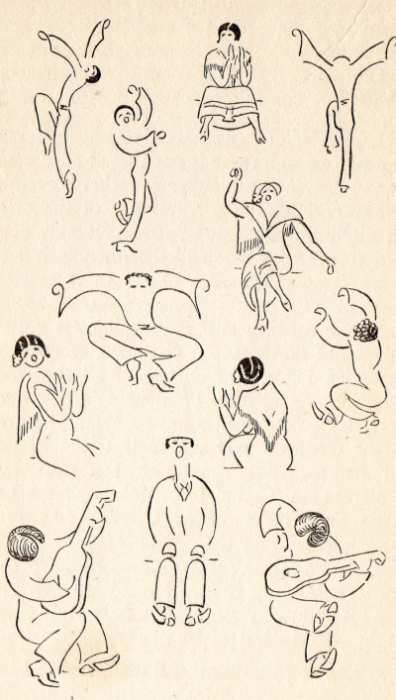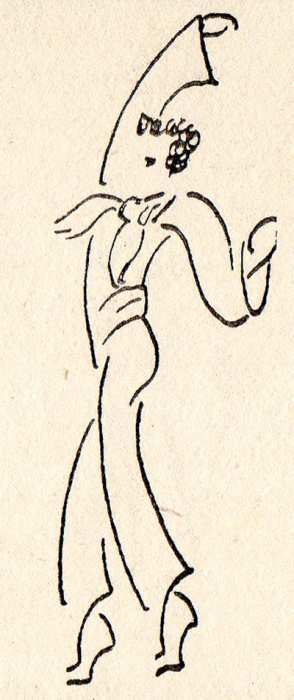Chapter Twenty-seven – Flamencos (Part One)
Flamencos (Part One) – Alza : Bailar : Brindar
"FLAMENCO" means Flemish – but curiously enough there is nothing at all Flemish about the flamenco; it suggests rather something gipsy-like and Moorish, a mixture of the orient and a night club in equal parts. Nobody could explain to me why it is called flamenco, but the northern Spaniards rather object to it precisely because of its oriental flavour.
A flamenco is singing and dancing and strumming on guitars, a clapping of hands and a clattering of castanets and wooden heels, and on top of all that there is shouting. And the flamencos are singers, dancers, ballerinas and guitar-players, who from midnight onwards perform their tricks in nocturnal haunts.

These popular songsters have such names as Cadiz Joe, Málaga Game-Leg, Valencia Snub-Nose or the Utrera Lad; often they are gypsies and their fame extends beyond the frontiers of their province, according to their ability in sustaining trills. I really do not know how the set about explaining all this to you.
Let’s try it in alphabetical order:
Alza : ¡Ole! ¡Joselito! ¡Bueno, bueno!
Bailar : Most of the Andalusian dancers are solo dances; the guitars strum a jerky, tinkling prelude, the seated troop begin to bestir themselves, beat time with their feet, clap their hands, begin to rattle the castanets; suddenly one of them rises, his arms fly up in the air and his legs begin to perform a frenzied dance with lots of stamping about it.

Take a Highland fling, a cake-walk, a tango, a Cossack gopak, an Apache dance, a fit of frenzy, unconcealed lechery and other frantic movements, kindle them to a white heat, and begin to batter them with castanets, shouting all the while; then the mixture would begin to twirl, with impassioned pauses in melody and dance amid a deafening rhythmic clatter of the castanets.
Unlike Northern dances, the Spanish dance occupies not only the feet, but the whole swaying body and especially the arms which are flung upward with a snapping of the fingers against the castanets, while the feet perform dancing movements, which involve much stamping and beating the heels on the ground. You might almost say that the feet only provide an accompaniment to the dance, which occupies the flanks and arms, as well as the trunk braced in a curve and undulating amid the wild clatter of castanets and heels.

The Spanish dance is a mysterious and, in effect, an orchestral interplay of the sharp, percussive rhythm of strings, castanets, tambourines and heels, with the supple flowing curve of the body as it dances.
The music and all its appurtenances, including the shouting and clapping of hands, sets a whirling tempo with is boisterously increased or slackened like the beating of the heart; but the body as it dances to the music plays a fluid solo violin melody, thrilling and passionate, a melody which exults, allures and laments, stormily swept along by the throbbing rhythm of the uproar accompanying the dance.
Brindar : Whereupon the guitars crash forth an ear-splitting note fit to break the strings in two, the onlookers begin to shout, and hand the dancer their glasses to drink a toast from.
